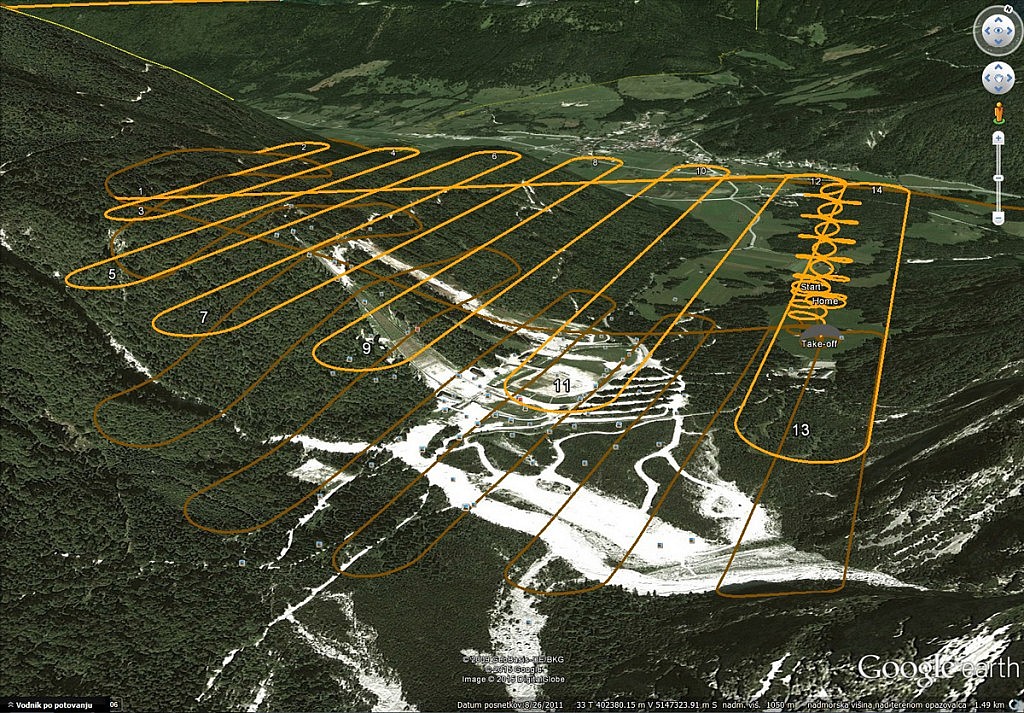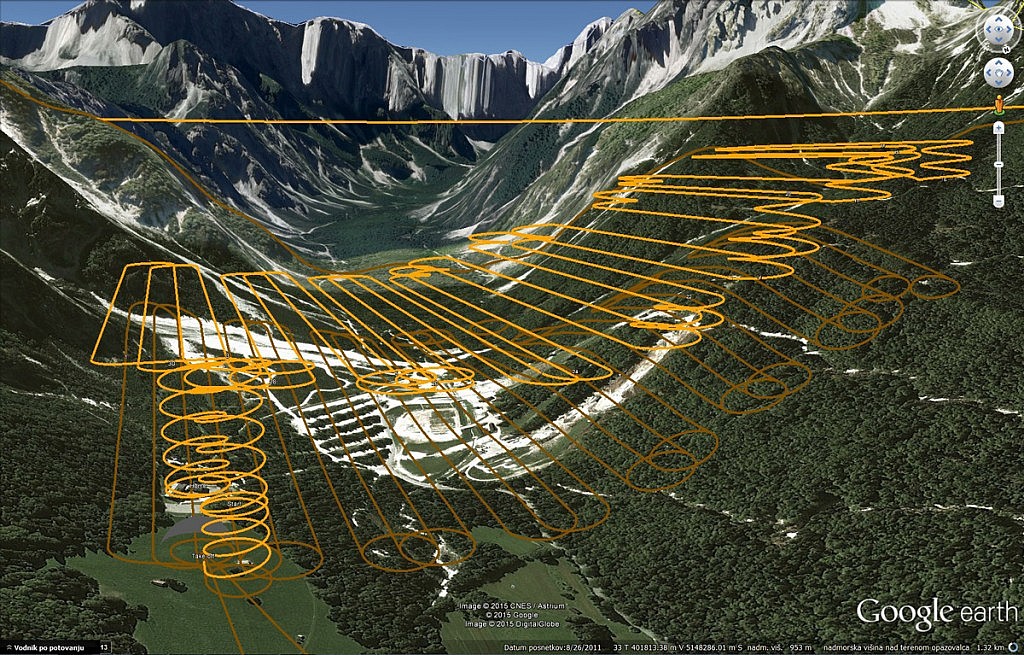When it comes to aerial photography, hilly areas represent a special challenge. The camera acquires an image of the landscape in a fashion similar to that of the human eye in central projection, which is why more remote objects seem smaller than the nearby objects. This means that the photo’s resolution changes depending on the object’s distance from the camera.
In photogrammetric use of photos, it is important for the distance (height) of the camera from the terrain to be as constant as possible in all photos. This is the only way to obtain all aerial photos in the same resolution. For this reason, each unmanned aircraft flight is planned in advance, which means that the aircraft’s flight route is set above the area of which aerial photos need to be taken. In this process, we use public data available on the terrain which, in addition to the satellite image (Google Satellite, Microsoft Satellite, Mapbox Satellite), include the data of the digital terrain model (improved SRTM). Based on these data, the altitude is adjusted to each aerial photography route. During flight, the unmanned aircraft then changes its altitude in line with its planned route.
In addition to obtaining suitable aerial photos, the correct planning of the unmanned aircraft’s flight ensures the safety of said aircraft while taking aerial photos of a dynamic terrain.


